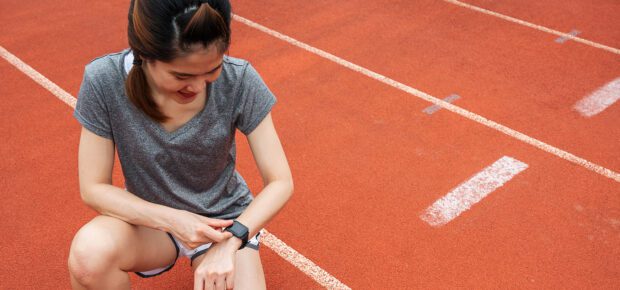May 23, 2024
According to the World Health Organization, 280 million people suffer from depression worldwide. More than half of those people aren’t diagnosed or treated because of the cost of care and effort involved in pursuing treatment.
Could fitness trackers and other wearables help screen for disorders like anxiety and depression?
IEEE Fellow Chenyang Lu thinks that’s a question worth exploring. Fitness trackers are unobtrusive, and wearing one requires little effort on the part of users, which could lower barriers to screening or lead to early identification.
“There is a scientific basis for detecting mental health disorders using wearables collecting activity and heart rate data,” Lu said. “It has been shown in the mental health literature that activity and heart rate patterns are associated with mental health.”
But much of the research in that area relied on small sample sizes or studies that consisted only of college students, which means the results may not be applicable to a wider population.
Lu and several collaborators developed WearNet, a deep-learning model that collected information from more than 8,900 participants the the National Institutes of Health’s All of Us dataset.
Here, he talks about the research and how it can serve as an early screening tool for mental health conditions.
What are the markers and variables that a wearable can detect that indicate a level of anxiety or depression?
The total number of steps per day is the most important for our model to detect depression and anxiety disorders. It is reassuring to note that this result of our deep learning model is consistent with previous findings in medical literature. Other variables of moderate importance include calories burnt during resting and activity, as well as sedentary time.
Your study mentions the use of a large and diverse dataset. Why is it important to have such diversity in your study population, and how did it impact the findings?
A major concern about any machine learning model is its generalizability. A model is trained using an existing dataset. The question is whether it will remain effective when applied to a new person whose data the model has not seen before. If a machine learning model is trained on a small dataset, it tends to overfit the training set. That is, it may be highly accurate specifically for the training set but perform poorly for a new person. Overfitting is especially concerning for deep learning models. The more diverse the training set is, the more generalizable the model tends to be because it has learned from data collected from different types of people.
WearNet combines a transformer encoder with a convolutional neural network. For readers who might not be familiar with these terms, could you explain what role artificial intelligence technologies played in these discoveries?
While there exist associations between activity and heart rate data and mental health, the underlying data patterns associated with depression and anxiety disorders are complex. The key strength of AI, especially deep learning models, is their ability to learn complex associations and predictive capabilities.
What challenges did you encounter in developing an end-to-end deep learning model for this purpose, especially considering the limitations of prior studies with smaller cohorts?
Historically, the big challenge is the lack of wearable data collected from a large and diverse cohort along with their mental health diagnosis. The “game-changer” is the National Institutes of Health’s All of Us program, which collects health data from large cohorts of people across communities. Leveraging this growing dataset allows us to train and validate advanced deep-learning models that are potentially generalizable to diverse populations.
Mental health is a complex and sensitive issue. How do you envision wearables being implemented in real-world settings to support individuals with depression and anxiety, while also ensuring privacy and ethical considerations are met?
Privacy is of paramount importance. We need to safeguard the wearable data of an individual as well as the predictions made using the individual’s data. A user should have control over their own data and any predictions and analyses based on the data. We should build the infrastructure with privacy guarantees. We must also be vigilant against potential bias that the model may pick up from the training data.
Looking forward, what are the next steps for this research? How do you see the future of wearable technology evolving to further support mental health detection and intervention?
First, we need to build an end-to-end infrastructure to detect depression and anxiety disorders using WearNet and data streams from wearables.
Second, we need to test WearNet’s capability to detect depression and anxiety disorders as they emerge in a prospective clinical trial.
Finally, we want to develop and test just-in-time interventions based on the screening using wearables so that we can treat patients in a timely and targeted manner to improve their mental health.






 Meaningful Momentum or Running in Place?
Meaningful Momentum or Running in Place? AI Through Our Ages
AI Through Our Ages Liquid Infrastructure: Our Planet's Most Precious Resource
Liquid Infrastructure: Our Planet's Most Precious Resource The Impact of Technology in 2025
The Impact of Technology in 2025 Quantum and AI: Safeguards or Threats to Cybersecurity?
Quantum and AI: Safeguards or Threats to Cybersecurity? Why AI Can't Live Without Us
Why AI Can't Live Without Us Bits, Bytes, Buildings and Bridges: Digital-Driven Infrastructure
Bits, Bytes, Buildings and Bridges: Digital-Driven Infrastructure Impact of Technology in 2024
Impact of Technology in 2024 Emerging AI Cybersecurity Challenges and Solutions
Emerging AI Cybersecurity Challenges and Solutions The Skies are Unlimited
The Skies are Unlimited Smart Cities 2030: How Tech is Reshaping Urbanscapes
Smart Cities 2030: How Tech is Reshaping Urbanscapes Impact of Technology 2023
Impact of Technology 2023 Cybersecurity for Life-Changing Innovations
Cybersecurity for Life-Changing Innovations Smarter Wearables Healthier Life
Smarter Wearables Healthier Life Infrastructure In Motion
Infrastructure In Motion The Impact of Tech in 2022 and Beyond
The Impact of Tech in 2022 and Beyond Cybersecurity, Technology and Protecting Our World
Cybersecurity, Technology and Protecting Our World How Technology Helps us Understand Our Health and Wellness
How Technology Helps us Understand Our Health and Wellness The Resilience of Humanity
The Resilience of Humanity Harnessing and Sustaining our Natural Resources
Harnessing and Sustaining our Natural Resources Creating Healthy Spaces Through Technology
Creating Healthy Spaces Through Technology Exceptional Infrastructure Challenges, Technology and Humanity
Exceptional Infrastructure Challenges, Technology and Humanity The Global Impact of IEEE's 802 Standards
The Global Impact of IEEE's 802 Standards Scenes of our Cyber Lives: The Security Threats and Technology Solutions Protecting Us
Scenes of our Cyber Lives: The Security Threats and Technology Solutions Protecting Us How Millennial Parents are Embracing Health and Wellness Technologies for Their Generation Alpha Kids
How Millennial Parents are Embracing Health and Wellness Technologies for Their Generation Alpha Kids Space Exploration, Technology and Our Lives
Space Exploration, Technology and Our Lives Global Innovation and the Environment
Global Innovation and the Environment How Technology, Privacy and Security are Changing Each Other (And Us)
How Technology, Privacy and Security are Changing Each Other (And Us) Find us in booth 31506, LVCC South Hall 3 and experience the Technology Moon Walk
Find us in booth 31506, LVCC South Hall 3 and experience the Technology Moon Walk Virtual and Mixed Reality
Virtual and Mixed Reality How Robots are Improving our Health
How Robots are Improving our Health IEEE Experts and the Robots They are Teaching
IEEE Experts and the Robots They are Teaching See how millennial parents around the world see AI impacting the lives of their tech-infused offspring
See how millennial parents around the world see AI impacting the lives of their tech-infused offspring Take the journey from farm to table and learn how IoT will help us reach the rising demand for food production
Take the journey from farm to table and learn how IoT will help us reach the rising demand for food production Watch technical experts discuss the latest cyber threats
Watch technical experts discuss the latest cyber threats Explore how researchers, teachers, explorers, healthcare and medical professionals use immersive technologies
Explore how researchers, teachers, explorers, healthcare and medical professionals use immersive technologies Follow the timeline to see how Generation AI will be impacted by technology
Follow the timeline to see how Generation AI will be impacted by technology Learn how your IoT data can be used by experiencing a day in a connected life
Learn how your IoT data can be used by experiencing a day in a connected life Listen to technical experts discuss the biggest security threats today
Listen to technical experts discuss the biggest security threats today See how tech has influenced and evolved with the Games
See how tech has influenced and evolved with the Games Enter our virtual home to explore the IoT (Internet of Things) technologies
Enter our virtual home to explore the IoT (Internet of Things) technologies Explore an interactive map showcasing exciting innovations in robotics
Explore an interactive map showcasing exciting innovations in robotics Interactively explore A.I. in recent Hollywood movies
Interactively explore A.I. in recent Hollywood movies Get immersed in technologies that will improve patients' lives
Get immersed in technologies that will improve patients' lives